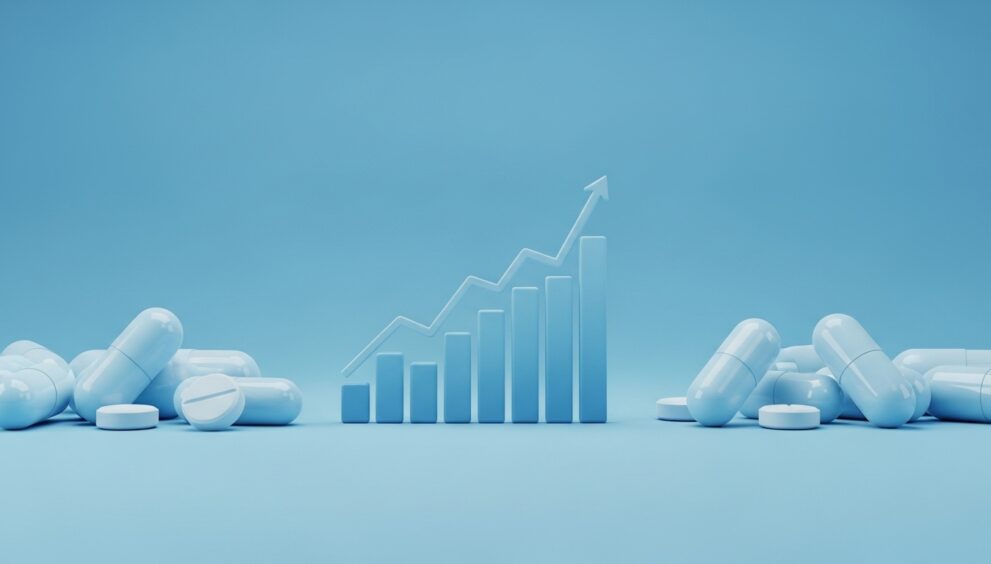 Africa’s pharmaceutical industry is entering a new phase of transformation, especially with a projected revenue of US$13.63 billion in 2025 and steady annual growth anticipated through 2030. The sector is poised to be a vital pillar in the continent’s broader development, yet behind the numbers lies a complex interplay of opportunity, constraints and rising expectations from increasingly health-conscious populations.
Africa’s pharmaceutical industry is entering a new phase of transformation, especially with a projected revenue of US$13.63 billion in 2025 and steady annual growth anticipated through 2030. The sector is poised to be a vital pillar in the continent’s broader development, yet behind the numbers lies a complex interplay of opportunity, constraints and rising expectations from increasingly health-conscious populations.
According to Statista’s 2025 forecast, Africa’s pharmaceutical market is expected to grow at a Compound Annual Growth Rate (CAGR) of 4.73%, reaching US$17.17 billion by 2030. While this is modest compared to giants like the U.S. pharmaceutical market (valued at over US$662 billion), it marks significant momentum for a region historically underrepresented in global health investments.
A large share of this market growth will be driven by the Oncology Drugs segment, which alone is in and of itself, expected to generate US$2.29 billion in 2025. This highlights the region’s shifting disease profile toward chronic and non-communicable diseases such as cancer, diabetes, and hypertension.
The surge in Africa’s pharmaceutical sector is propelled by several macroeconomic and social factors such as the demand creation for structured healthcare systems, increased healthcare expenditure at both governmental and individual levels, a more informed and health-conscious consumer base, seeking access to quality medications and a growing preference for generic medicines, spurred by their affordability and wide accessibility.
South Africa stands out as the continent’s largest pharmaceutical market, yet while South Africa’s market is largely dominated by multinational pharmaceutical firms, local manufacturers in other countries are playing a more active role—contributing not just to domestic supply but increasingly to regional exports. Despite this progress, significant hurdles remain.
Many parts of Africa face insufficient healthcare infrastructure, especially in rural areas. There’s also the prevalence of counterfeit medicines, driven by weak regulation and limited access, regulatory fragmentation across countries, making it difficult for companies to scale regionally.
Contributing painfully to the already existing woes, there’s a limited access to R&D funding and challenges in protecting intellectual property. All these pose a significant amount of problems for the promising Health sector in Africa.
Governments across the continent are stepping up with their efforts to address these constraints, notably by enacting policy reforms, encouraging public-private partnerships, and investing in pharma-industrial parks and logistics hubs.
The African Continental Free Trade Area (AfCFTA) could be a game-changer. By enabling freer movement of goods and reducing tariff and non-tariff barriers, AfCFTA offers pharmaceutical companies the chance to scale across borders and reduce costs. For countries looking to expand domestic production—whether in active pharmaceutical ingredients (APIs) or finished drugs—this regional integration is a strategic advantage.
Africa’s pharmaceutical trajectory is clear: more investment, better regulation, deeper integration. Yet the industry’s future hinges on how quickly countries can modernize their regulatory environments, foster talent development, and ensure equitable access to essential medicines. If these conditions are met, the region won’t just be a growing market—it will become a meaningful player in global pharmaceutical supply chains.
Source: CPC1 HANOI AT WEST AFRICA PHARMA & HEALTHCARE – VISIT US AT… | CPHI Online




